Whilst staying at Povoa de Varzim, we took the opportunity to visit nearby Porto. It is only just under an hour on the metro and, at bargain price of 6 euros return, we made a couple of day trips.
Porto is in northern Portugal on the estuary of the Douro River and it is a UNESCO World Heritage Site. We have not visited there before and were impressed by its beauty.
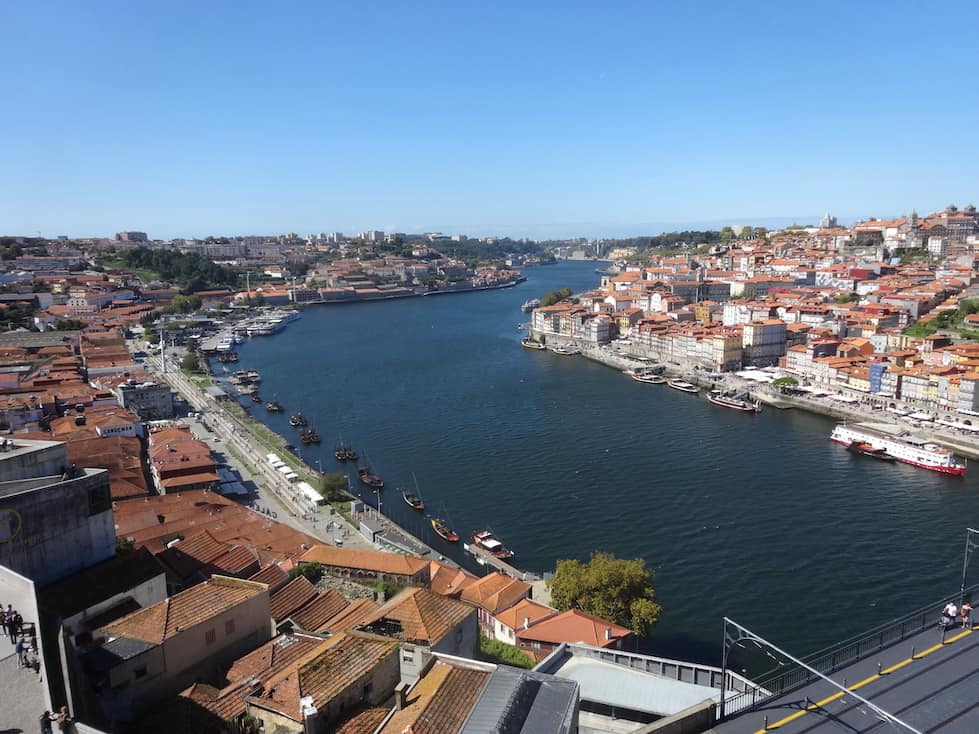
On our first visit, we slowly wandered down through the city, making our way to the river and the famous Ponte de Dom Luis I (Dom Luis I Bridge).
On the second visit, we had Martin’s mum with us. Keen to try something a little different (and to save Jean’s feet), we took a city tour in a ‘vintage’ car. The car was an electric replica of a Ford Model T and it was an amazing way to see a snapshot of the city. Our guide, Debra (hope I spell it right!) was excellent and very informative. We would definitely recommend Oldtour.
During the tour, we saw all the major sites: Torre dos Clerigos, Se Catedral, Liberdade Square, Cais da Ribeira, Igreja de Sao Francisco and of course the six bridges across the River Douro.
As the tour was only 90 minutes, most places were seen from the car while passing, but there was time for several photo stops with amazing views over the River.
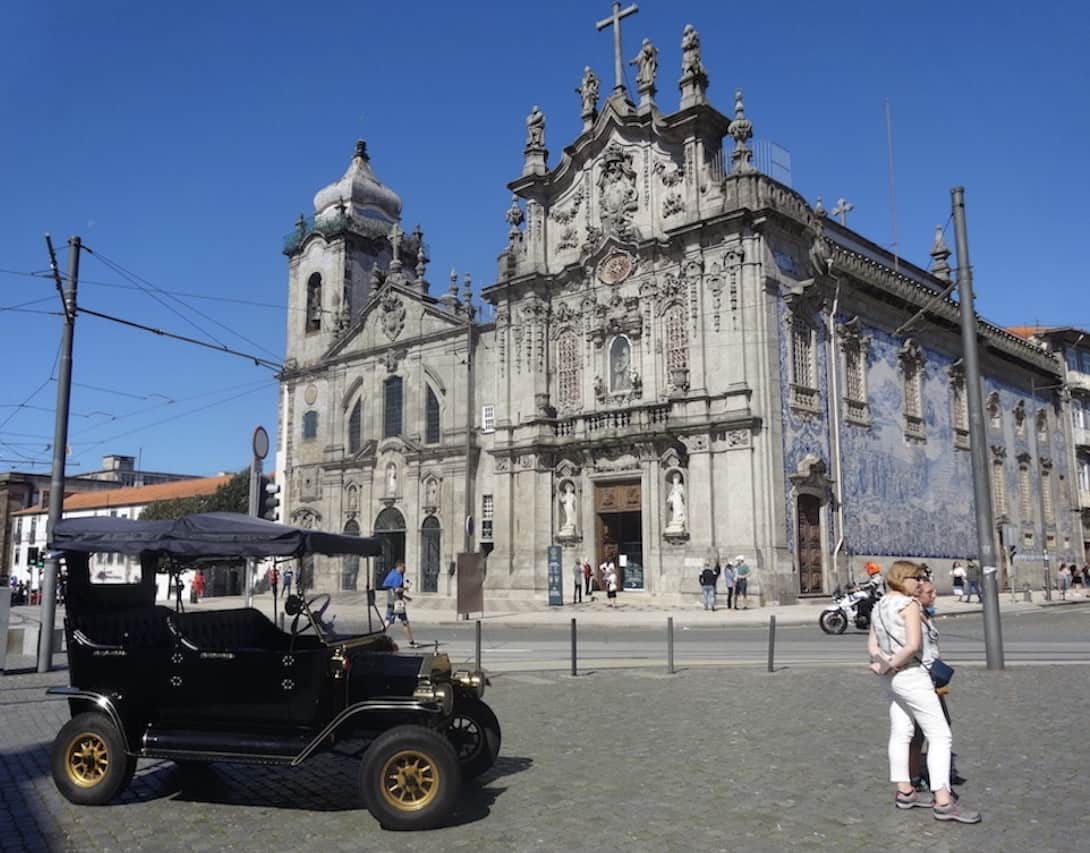
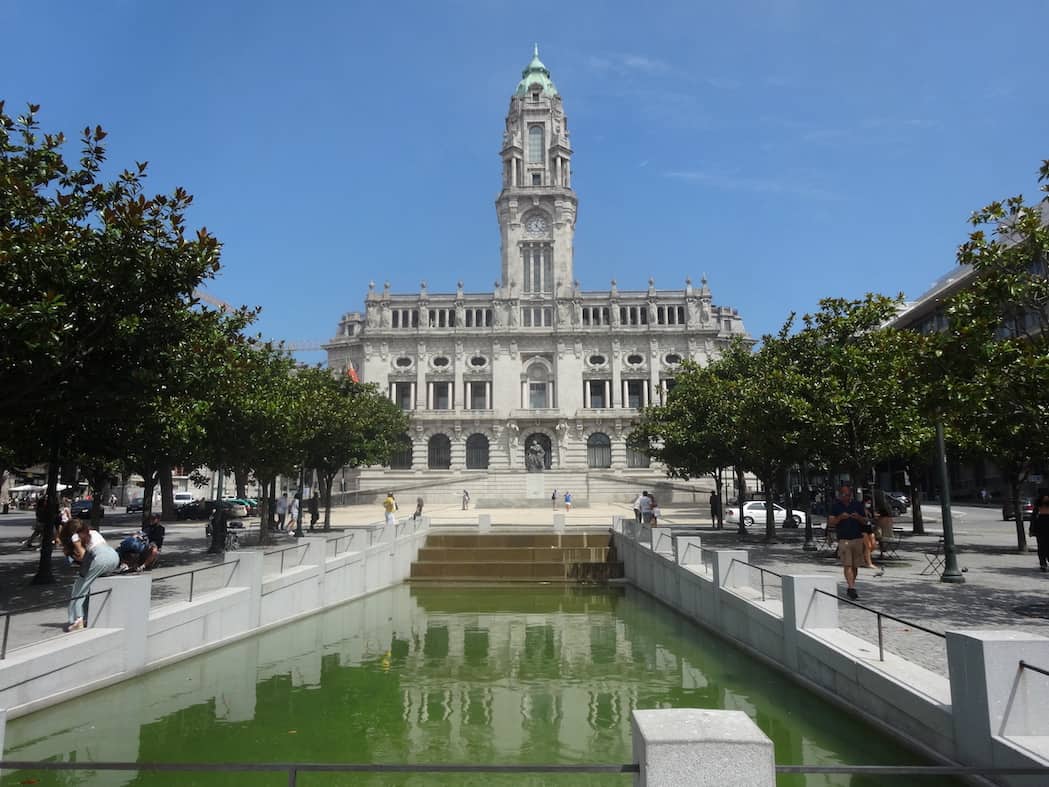
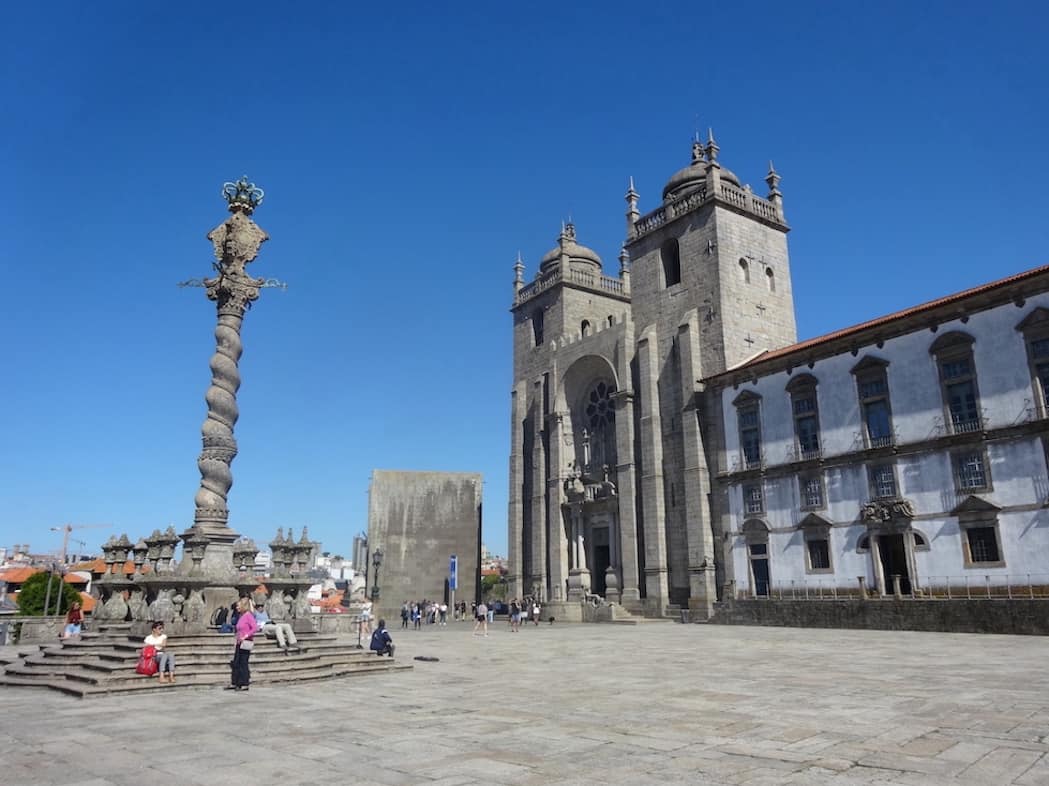
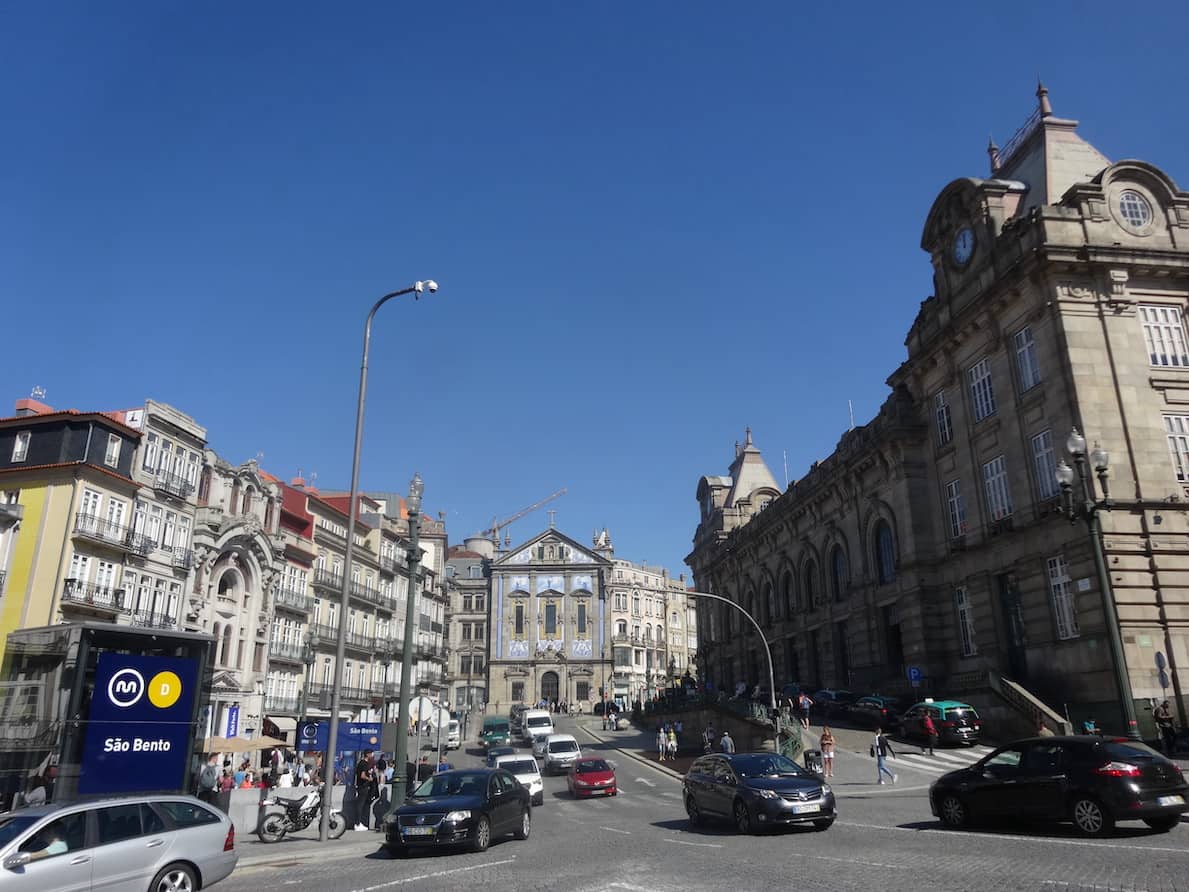
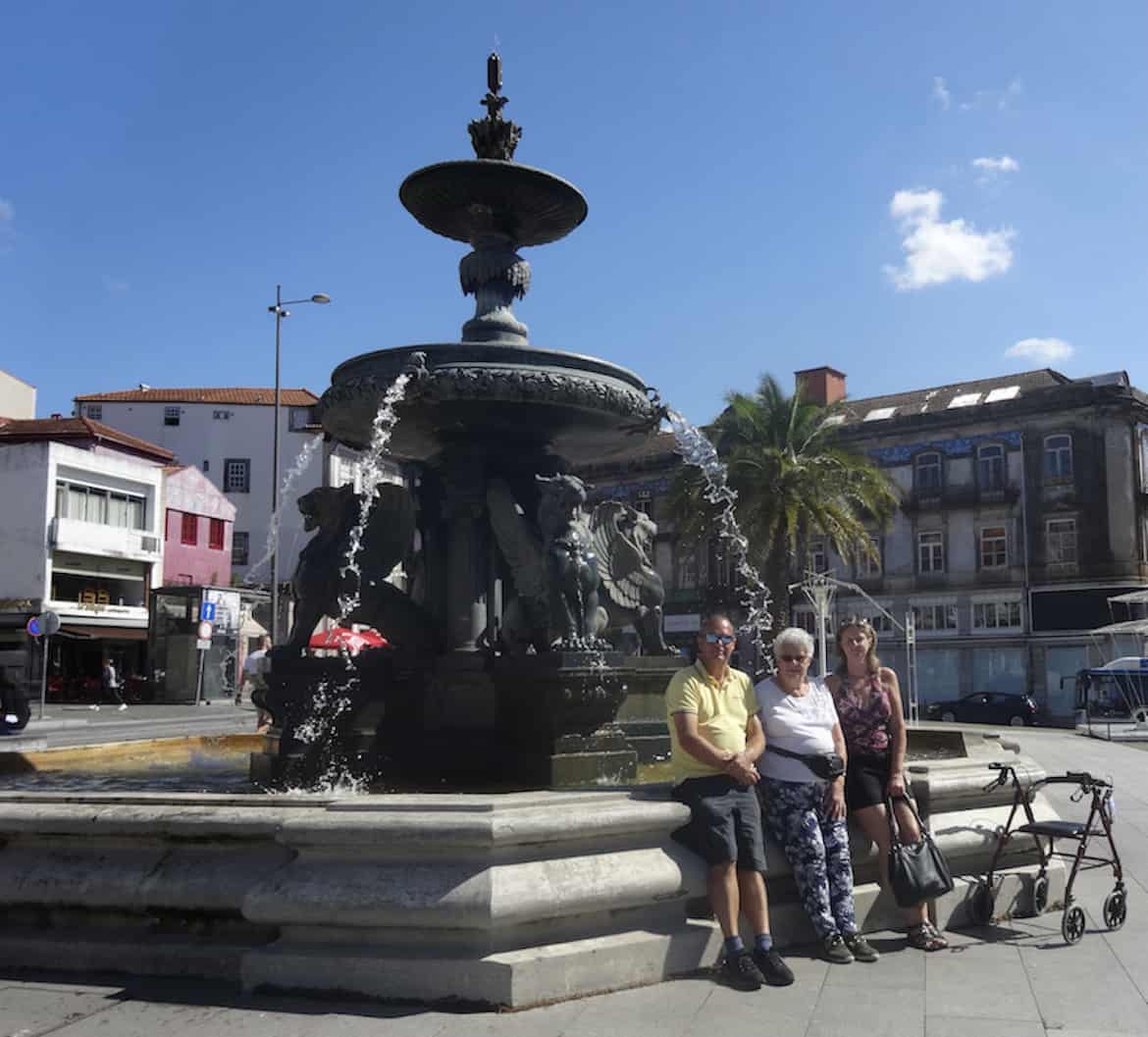
Also included in the tour was some fascinating information about how the city may have influenced JK Rowling when collecting ideas for her Harry Potter books.
JK Rowling lived in Porto for two years and seems to have taken inspiration from the city: the long black capes that are part of the uniform for Coimbra University, Livraria Lello Book shop with its impressive staircases and the Fonte dos Leos (Fountain of Lions) with majestic statues.
Walking downhill from Liberdade Square towards the riverside, we stopped to peek inside Sao Bento Train station. We took some time to admire its ornate entrance covered in azulejo tiles. The 20,000 tiles date back to between 1905 to 1916 and depict various famous battles and scenes from everyday life in the portuguese countryside.
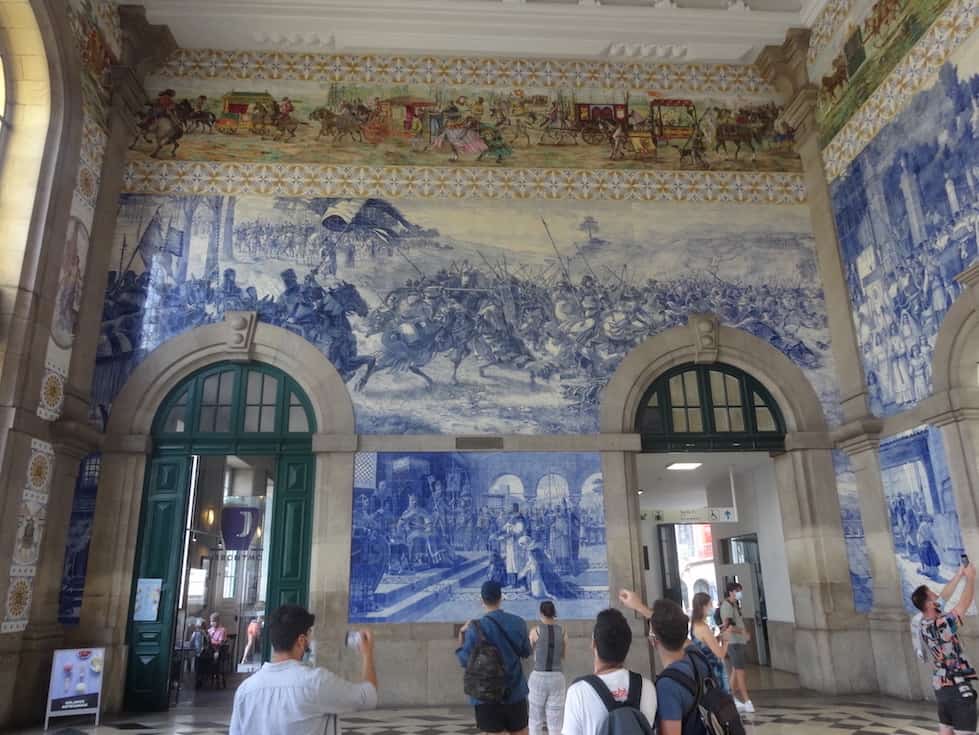
Continuing on from the station, our route took us down one of Porto’s prettiest streets – Rua das Flores (Flower Street). Lined by tall buildings with their wrought iron, flower covered balconies, the street contains many street cafes, trinket shops and local artists selling their wares.
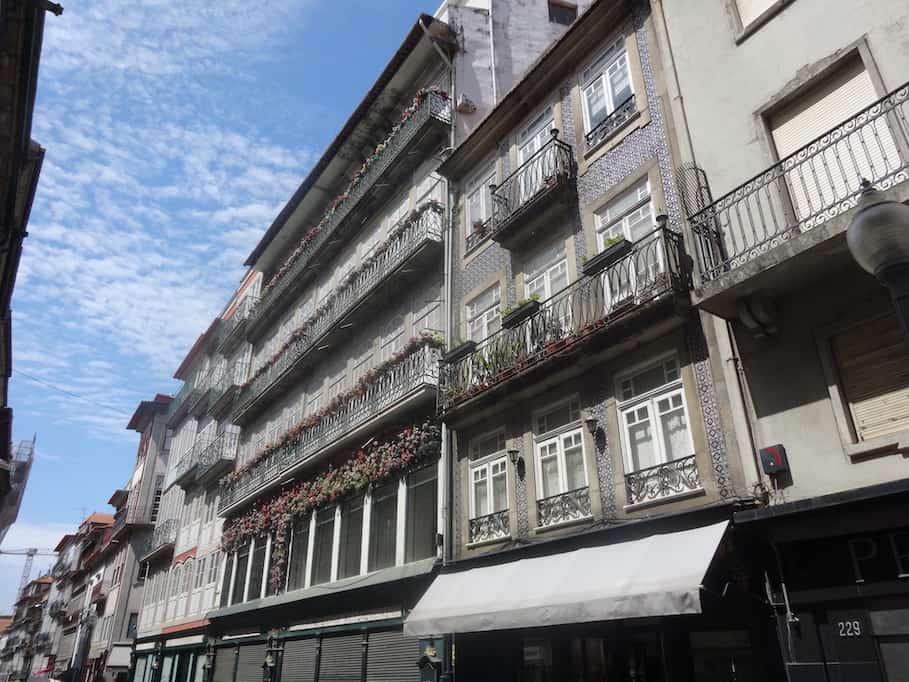
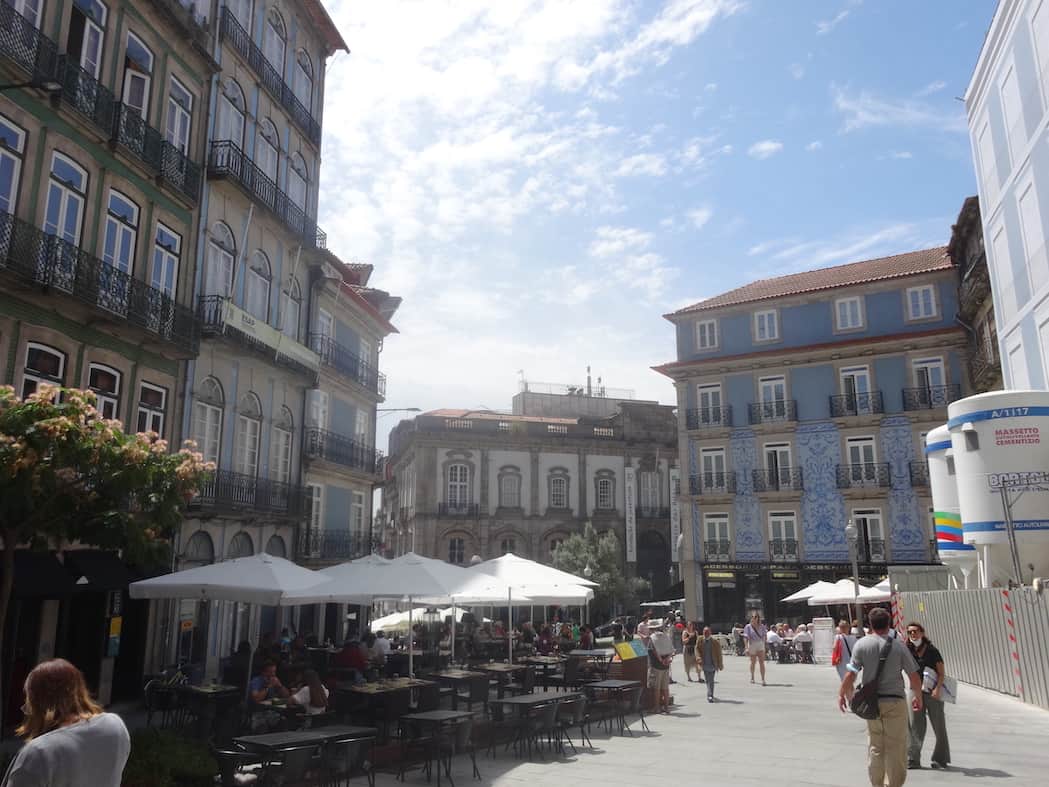
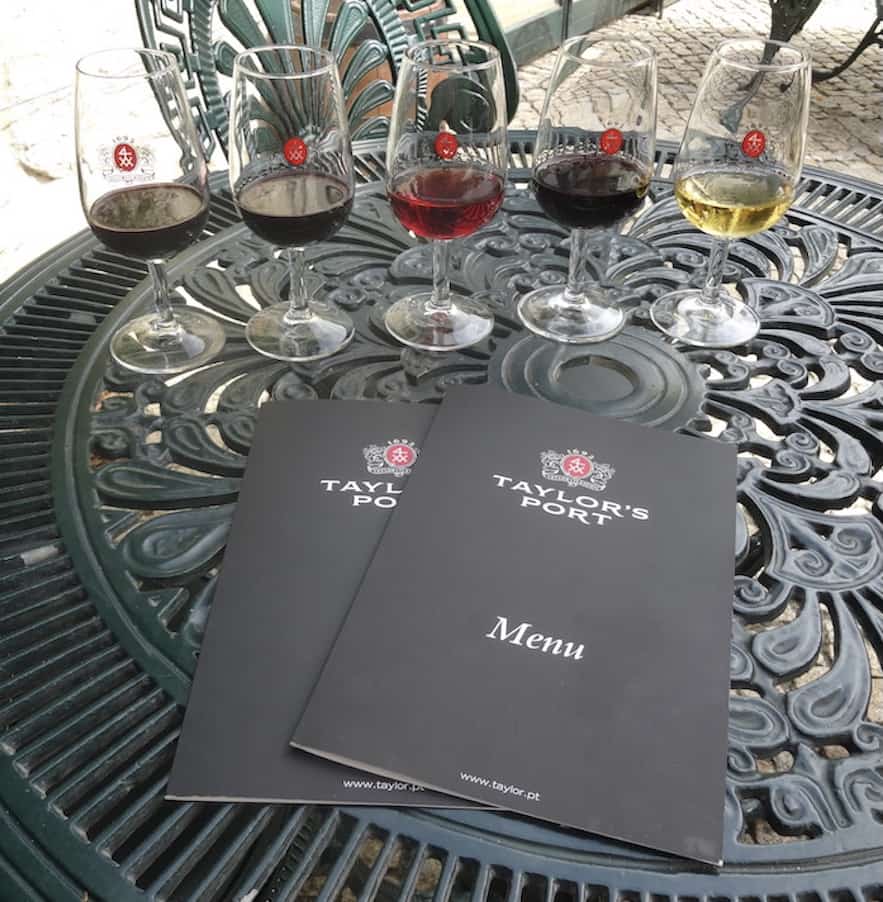
Along the riverside and across the Ponte de Dom Luis I, we were in Gaia. The area is famous for its history of port production and is littered with port cellars offering tasting and tours. We chose two very different ones.
On our first visit, Martin and I moved away from the busy riverside, to the quieter up hill streets. There we found Taylors and, in their secluded garden with cobbles and peacocks, we treated ourselves to a selection of 5 of their finest to try.
On our second visit, we opted for Calem Caves. This gave us a short tour of the port cellars, lots of information about the port making process, then a tasting with a difference… with Fado. This is traditional portuguese music – acoustic singing with guitar accompaniment. Very enjoyable!
Obviously, no day out would be complete without sampling the local produce – whether that be pancakes in a street cafe, tapas and wine overlooking the river or cod fish cakes while listening to an organ recital!! All helped to make the days memorable.
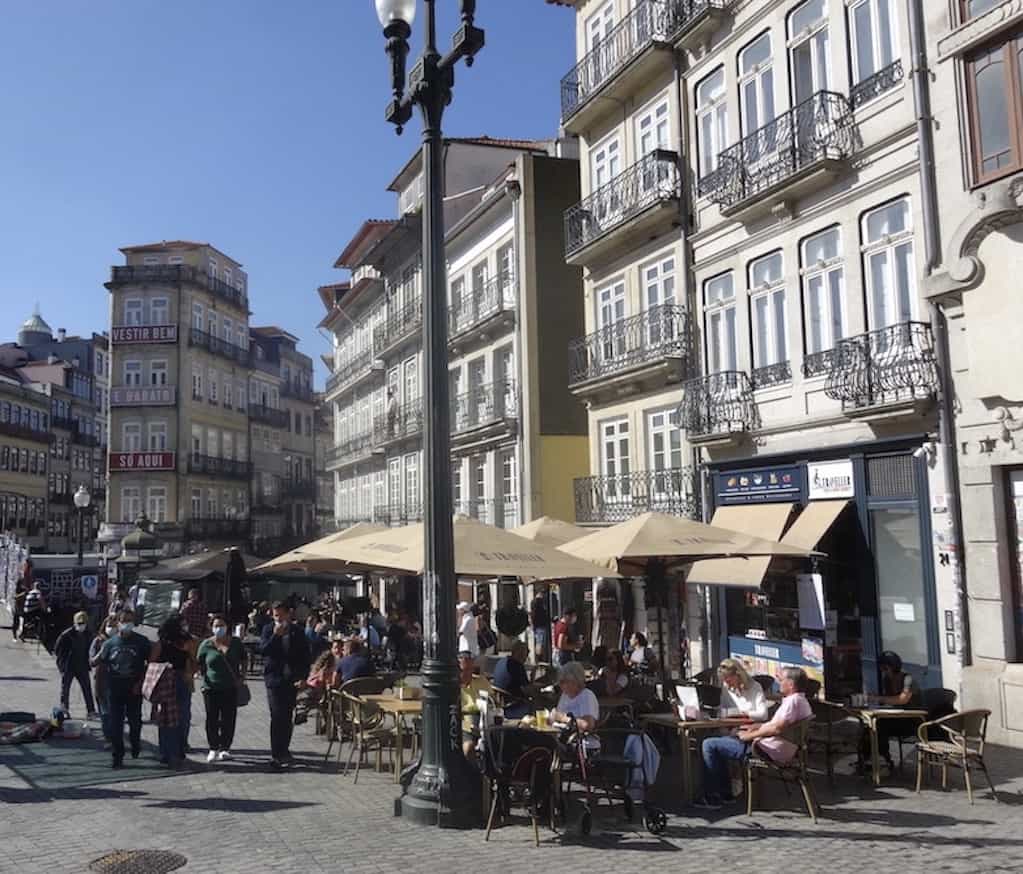
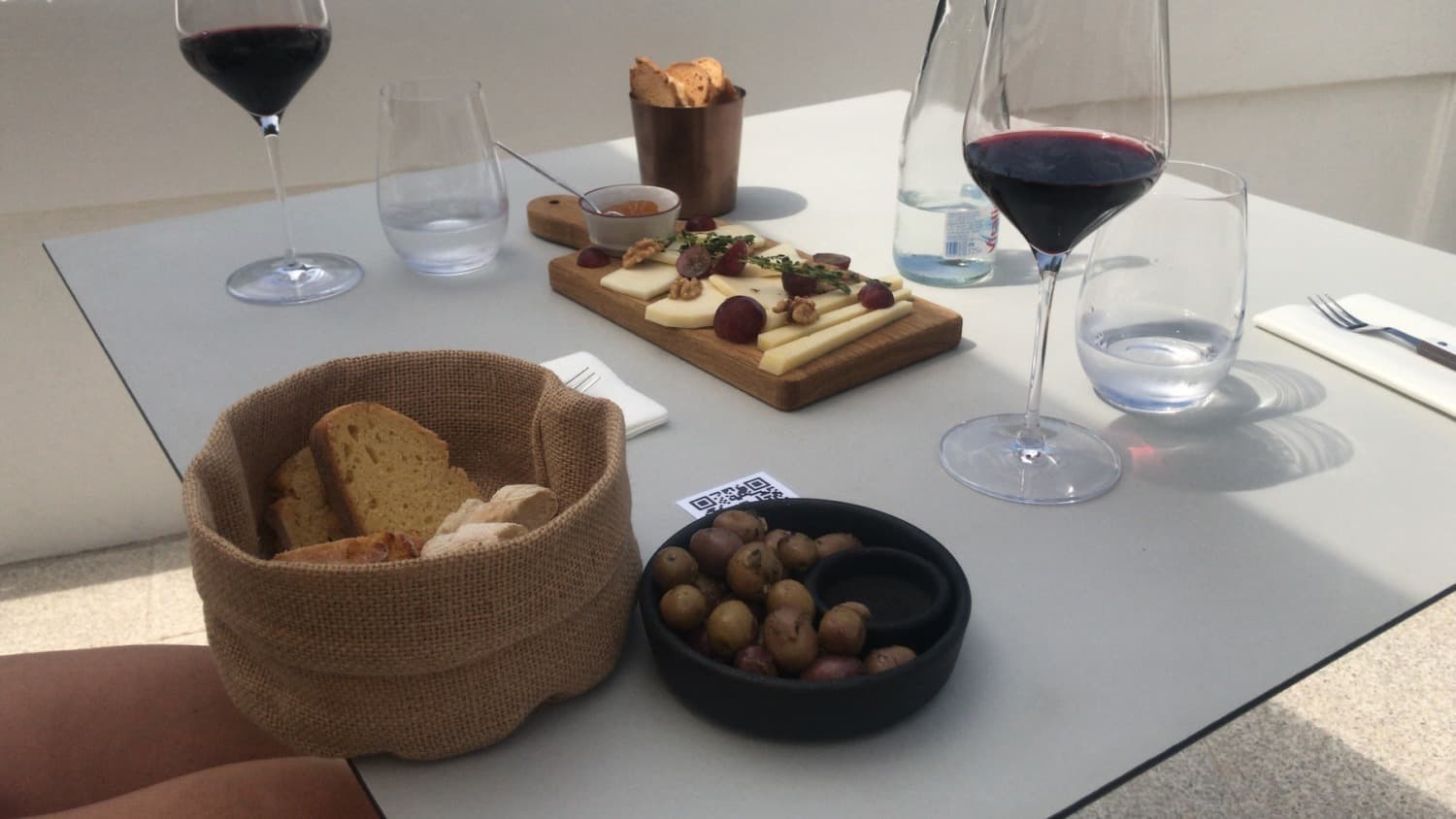
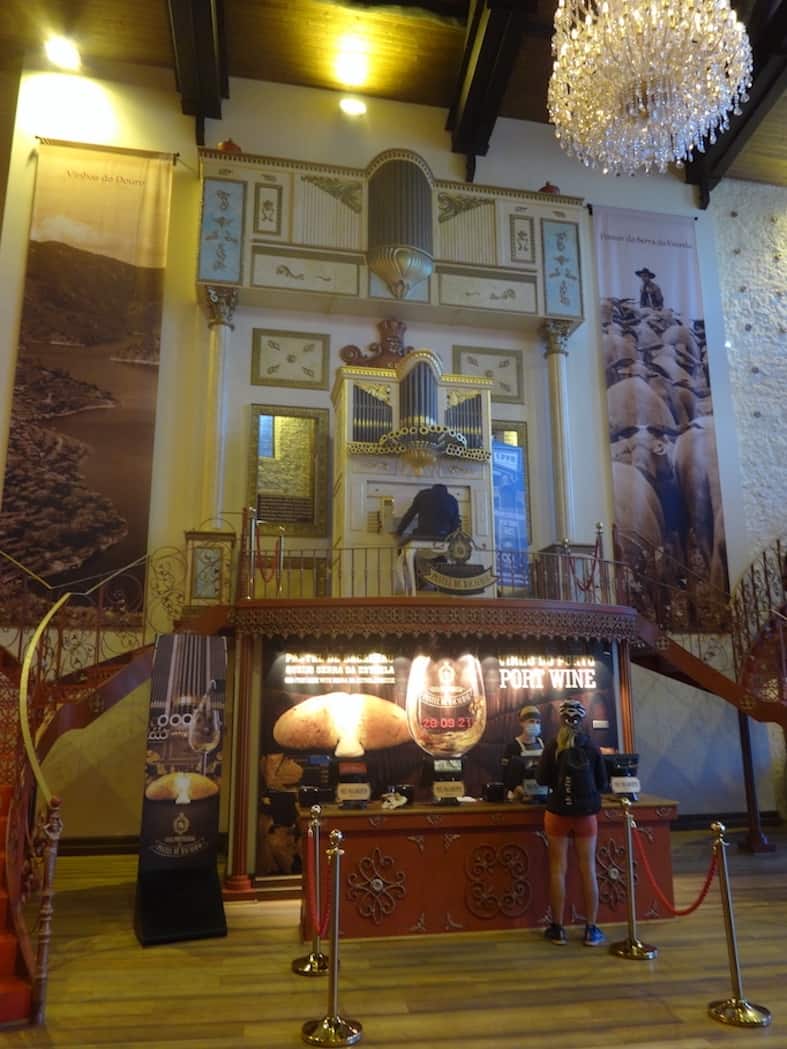
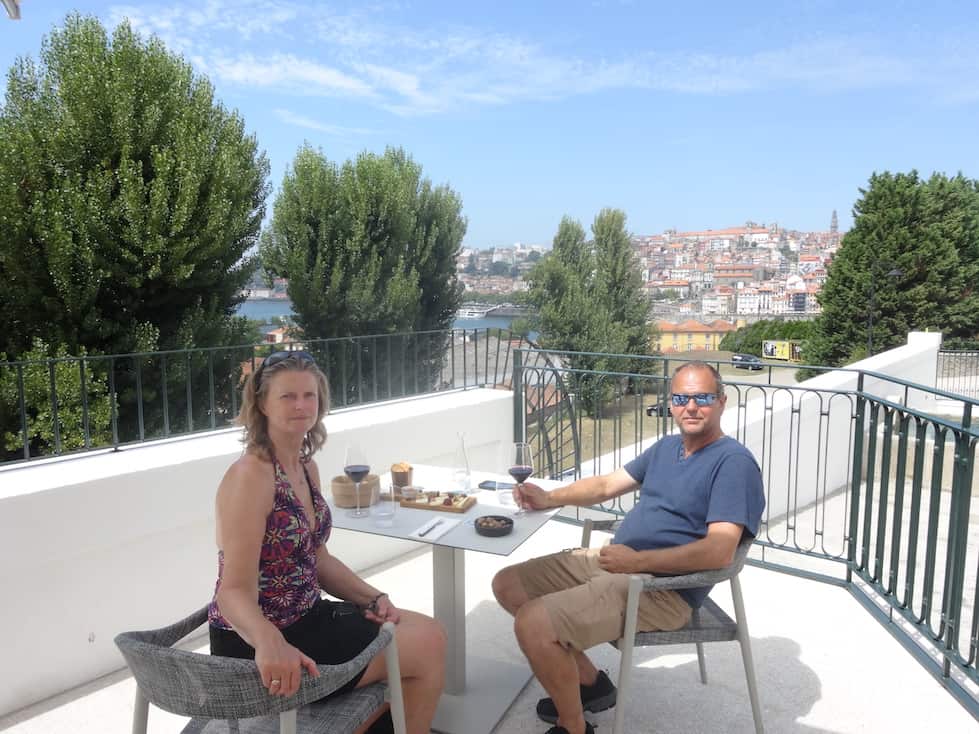

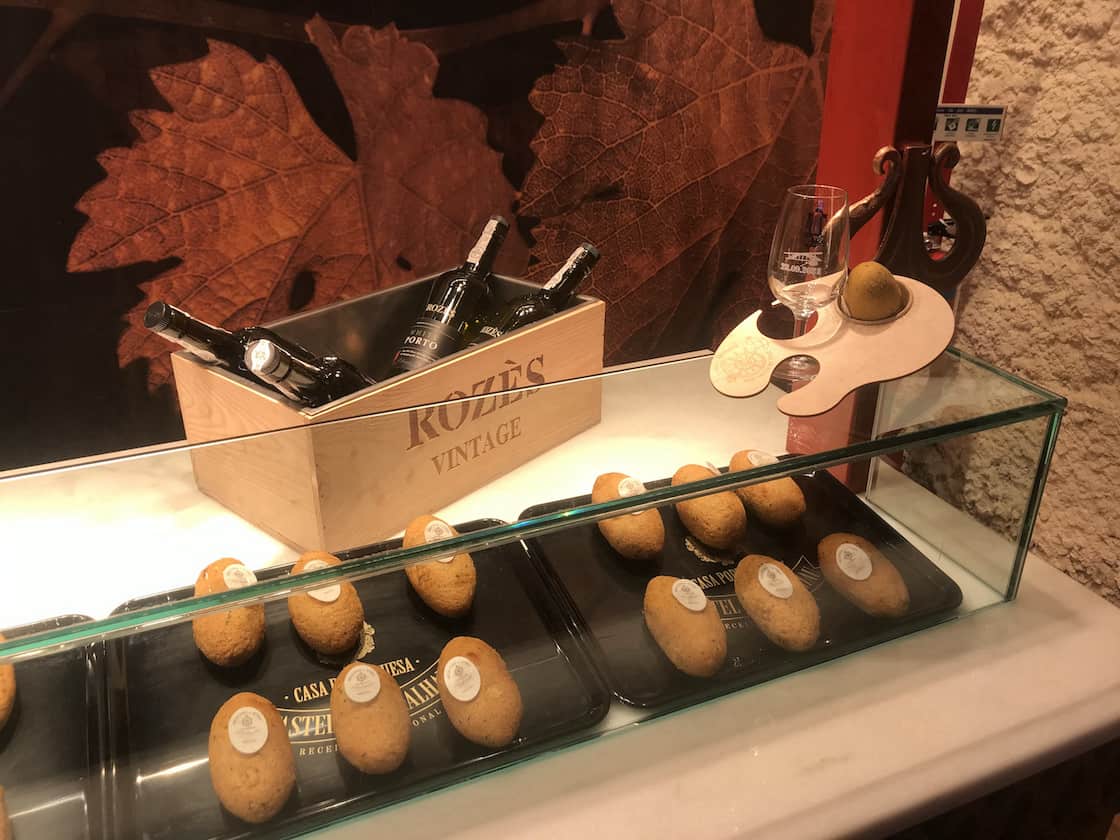
All sounds very interesting, nice weather, nice city, great food and a little port to wash it all down, I’m finding out without having to travel, love it xxx
Hi,
We really liked Porto and would definitely recommend it… reading about it is not good enough though. Get booked to go xx
Porto looks great! It’s on my list. You both look relaxed.
Hi,
Hope you get to visit it soon. It was brilliant and definitely worth visiting.
We are both well and enjoying our new lives x
UNESCO World Heritage Sites are always worth a visit – looks like you are making every effort to maximise your adventure. This all looks and sounds wonderful, and a very long way from Rainworth!
Hello,
Great to hear from you. Hope you and the family are well.
It certainly is a very, very long way from Rainworth and hopefully, as we continue, we will be even further away.